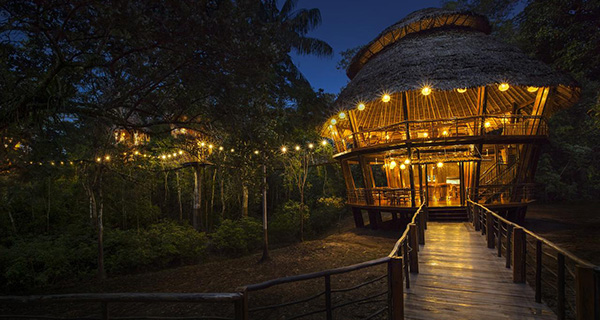 Spring break. Those two words make many people giddy with excitement right about now. But in the fever of getting ready to flee winter’s frigid temperatures, many of us – especially if we’re fortunate enough not to have health issues – often forget about buying health insurance for travel abroad.
Spring break. Those two words make many people giddy with excitement right about now. But in the fever of getting ready to flee winter’s frigid temperatures, many of us – especially if we’re fortunate enough not to have health issues – often forget about buying health insurance for travel abroad.
I can’t count the times I’ve forgotten to call my insurance provider, often doing it the day before I leave or even from the airport. Fail.
A recent Travel Health Insurance Association of Canada (THiA) study reveals I’m not alone. I also found some eye-opening statistics and consumer misconceptions about travel insurance:
- 35 per cent of Canadians believe they’re covered by their provincial health insurance when they travel out of the country;
- 17 per cent don’t know what their policy covers;
- 13 per cent are unsure if they even have health insurance before they go on holidays.
Many Canadians think their provincial health care will cover the costs of, for example, a broken bone. “But that’s simply not the case,” says Brad Dance, president of THiA.
If you had the misfortune of breaking an ankle or wrist while in California or Arizona, and even Mexico, you’d be looking at a bill of up to $40,000 to $50,000. You’d be on the hook for 95 per cent of that, because provincial health care will generally cover about five per cent, according to Dance.
Allianz Global Assistance Canada notes some more potentially devastating costs in the event of injury: A broken ankle in the Bahamas averages US$11,470, with a hospital stay of 2.5 days. In Cuba, the average cost of a broken leg is US$3,835, with a hospital stay of eight days. A hip fracture in the Dominican Republic averages US$43,500.
Dance says there are other misconceptions about out-of-country health policies. Among them:
- You may have insurance on your credit card or through an employee benefit, but a lot of people are not familiar with what that actually covers and just take the leap of faith they will be fully covered.
- People don’t buy insurance because they think it’s expensive. And it can be for someone with pre-existing health problems. But for a healthy person from their teens to their 50s, insurance for a week’s holiday can be about $30 to $50, depending on the provider.
- There’s also the invincibility mindset that we assume nothing will happen because it never does at home.
Here’s a primer on what you need to know about travel insurance before you jet off:
- Understand your travel insurance policy and ask your provider lots of questions if it’s not clear to you.
- Know your trip. Do you plan to scuba dive, bungee jump, parasail or paraglide? Not all policies will cover these activities.
- Understand for how long you’re covered. You can purchase a single-use plan or an annual plan if you’re vacationing three or four times over the course of a year. Just be sure you’re covered for the length of your trips.
- Know your health so you can answer all the questions truthfully for your policy.
- THiA also has a travel insurance bill of rights that includes the right to request clarification, a no-obligation purchase and a 10-day free look, after which you can decide if you don’t want the policy. In that case, the premium will be refunded.
- Read the fine print. Take the time to know the ins and outs of your policy in case of illness or emergency. Spring break only comes once a year.
For more information, check out the government of Canada’s spring break advisory.
Are you game to be an eco-Adventure Junky?
Maybe this sounds like your idea of adventuring in 2019: snorkelling with turtles and sea lions in Ecuador, glamping in the sand dunes of the Sahara, horseback riding through Patagonia or digging for dinosaur bones in Alberta’s Badlands. (Humble) bragging rights included.
Adventure Junky is an app aimed at folks who like their travels with a heavy dose of rare moments and leaving zero impact. It’s super simple to use.
Once you download the app, you earn points for uploading your photos. Bonus points are added as people either like your pics or begin following you. Every time you upload your adventures. You could win points and patches – kind of like when you were a Scout or Guide, only now you’re the one in charge of the fun.
Your adventures don’t have to be exotic, but they should be inspiring, fresh and eco-friendly. They can even be right in your backyard.
And if you’re looking for a new adventure, maps will point you in the right direction.
Check out the Adventure Junky app here.
Canadians opt for quirky stays
Luxury tents. Tree houses. Castles. Igloos, riads and ryokans. More and more Canadians are thinking outside the boxy hotel room when it comes to booking holiday accommodations.
What’s driving the trend? Well, we definitely have more choices than ever for cool places to sleep and stay. But it also seems Canadian travellers are smitten with the idea of being the first among their tribe to sleep somewhere that’s 180 degrees from conventional cookie-cutter hotels and motels.
Booking.com, a travel accommodation booking platform, recently conducted a survey of more than 52,000 travellers in 31 markets. Here’s what it found about Canadian travellers’ preferences:
- Canadians are looking to bust out of the vacation mould. More than a quarter of Canadians say they opt to stay at quirky accommodations, including tree houses, tents and castles.
- Think Canadians are humble and apologetic? Not when it comes to racking up travel street cred. Nearly half of Canadians (43 per cent) admit they want to show off to their friends and be the first to have travelled somewhere.
- Living like a local also motivates Canadians to choose unusual accommodations. More than 40 per cent say home-stay-style accommodations give them a chance to explore places in an authentic way.
- Canadians are also known to be a bit on the frugal side. That’s why 40 per cent say they’ll look for alternative accommodations, which can also be cheaper.
Troy Media columnist Lisa Monforton is an award-winner Calgary-based travel writer. Follow @lisamonforton on Instagram and Twitter.
The views, opinions and positions expressed by columnists and contributors are the author’s alone. They do not inherently or expressly reflect the views, opinions and/or positions of our publication.






